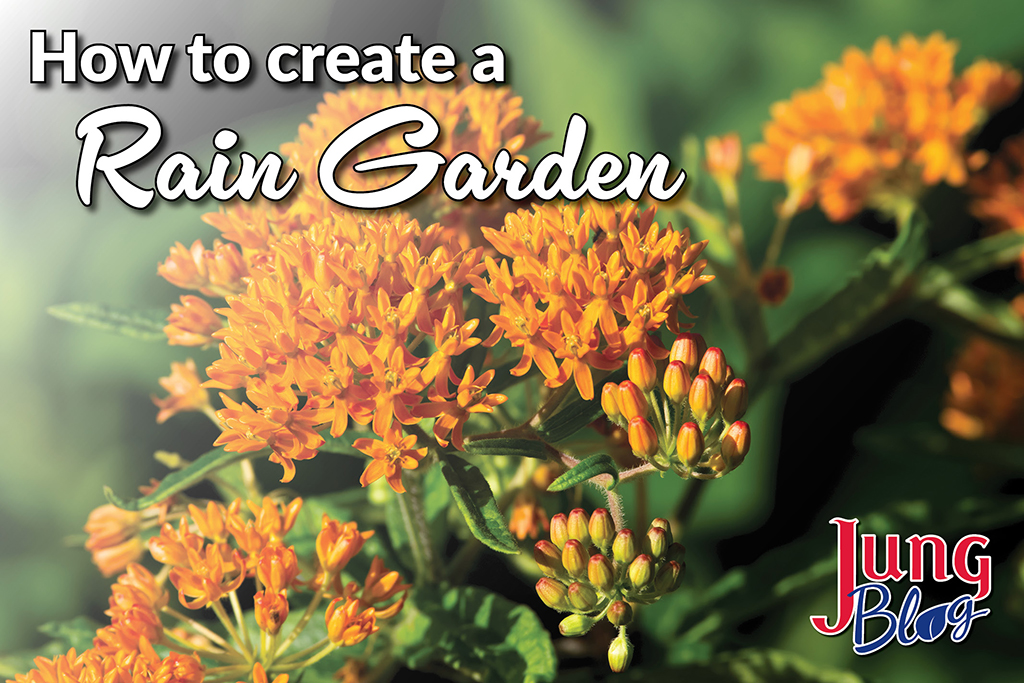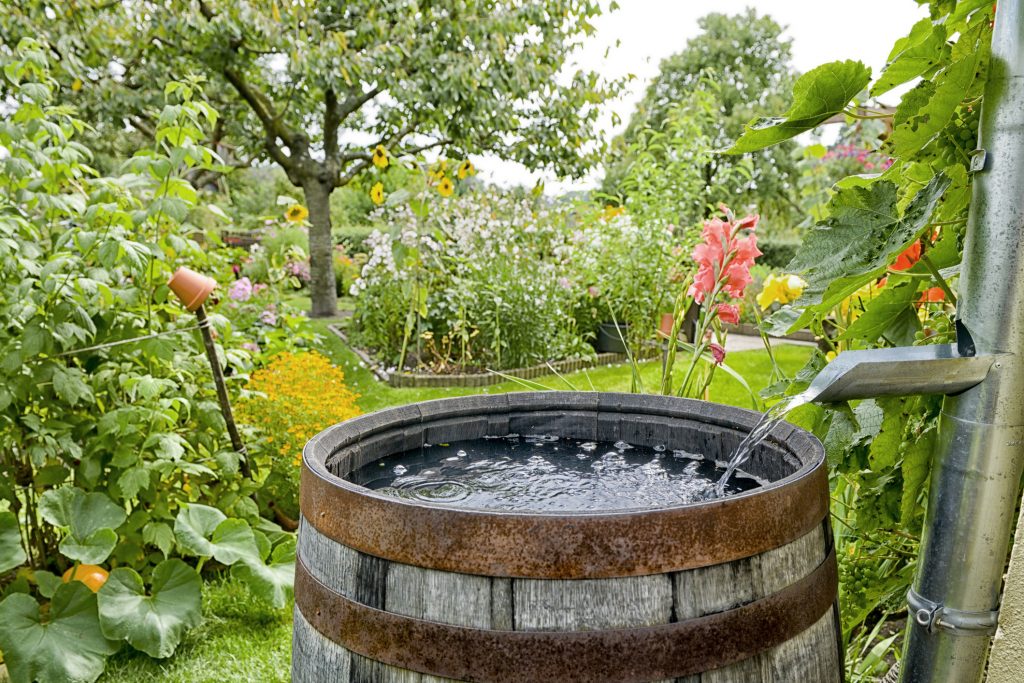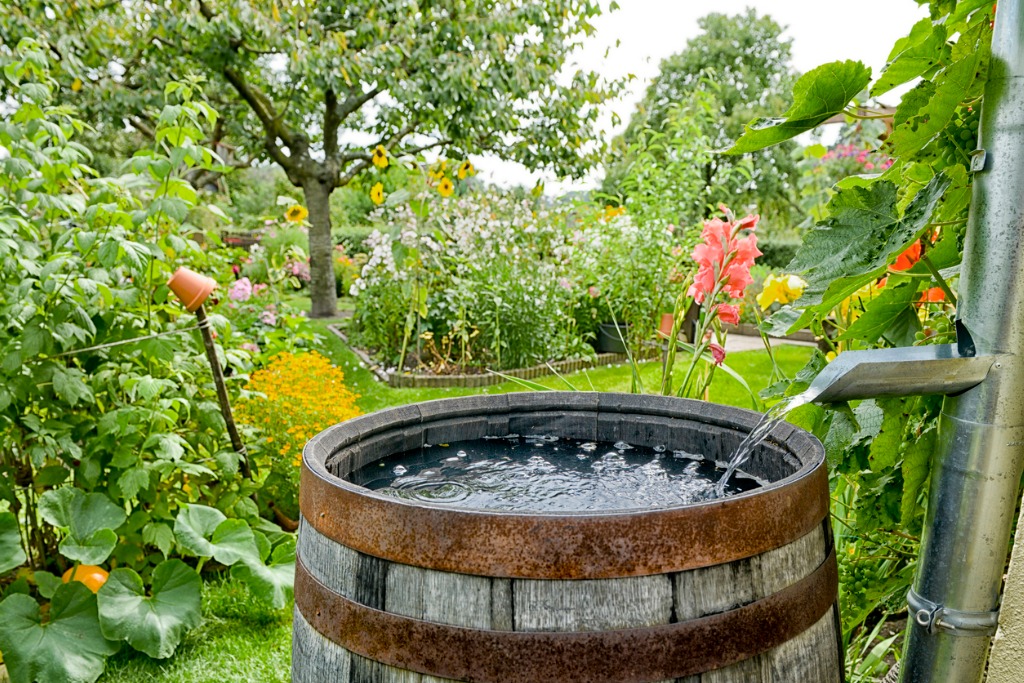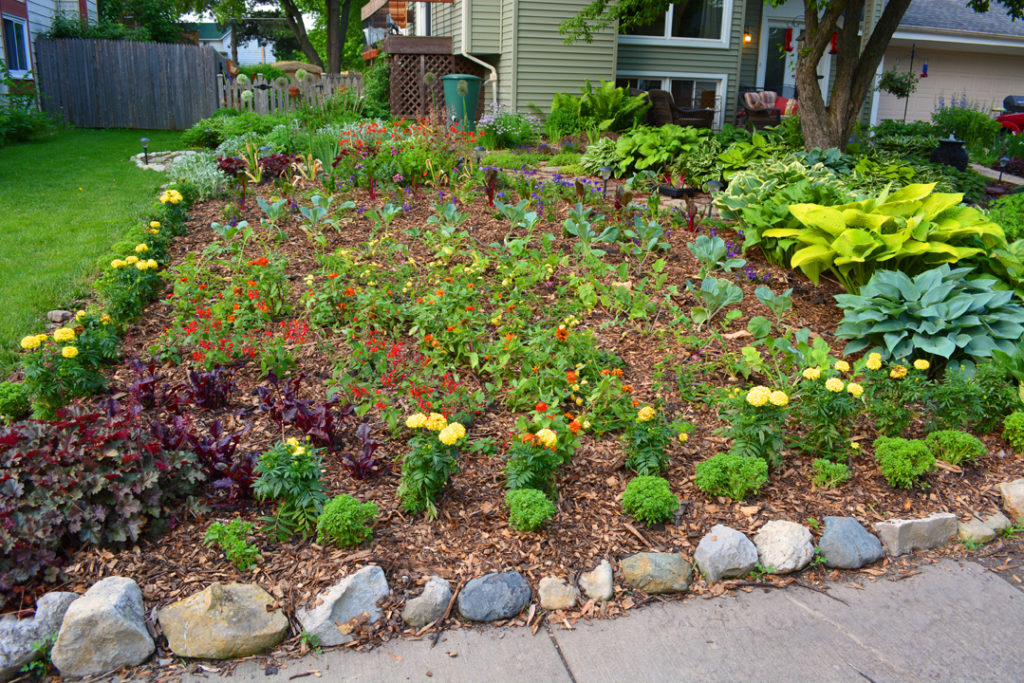
Picture this: it’s a hot summer day, and you’re heading to the garden to water your plants when suddenly, a rainstorm arrives, and you don’t have to water them anymore. For many of us, that’s a dream come true. However, the excess water from these rain events can end up on roads and sidewalks, causing less water to be absorbed by the soil. As the water runs along the road, it may pick up pollutants and other debris, which may end up in lakes and rivers.
A great way to reroute some of this water is creating a rain garden, which is designed to absorb runoff and filter out pollutants. These spaces are low areas in the landscape that are planted with perennials and sometimes shrubs, allowing the roots to absorb the water and prevent erosion. And that’s not all! Plants used for rain gardens are often natives, so you are also helping local insects, pollinators, and wildlife. Once established, these gardens require little maintenance or watering. And like many gardens, they improve the aesthetics of the landscape.
Designing A Rain Garden

This step is critical for creating a functional rain garden. Like any garden, there are no rules on how the finished space must look, but here are things to consider when making the design.
Location
As you look around your property, look for low areas far away from buildings, septic drainage fields, or wells. Here is a distance guide to help you find a good spot. *
| Feature | Recommended Distance |
| Buildings and foundations | At least 10 feet away |
| Septic Drain Fields | At least 35 feet away |
| Water Wells and other Utilities | At least 50 feet away |
It’s also important to call your local Digger’s hotline before installing a rain garden.
Soil
These gardens will hold large amounts of water during a rainstorm, so testing your soil and its ability to absorb water is essential. For soil testing, you can contact your local extension office for instructions on submitting soil samples for testing. You’ll want the soil to have good drainage to prevent the plants from drowning, which means the water should be absorbed within 48 hours of a rainstorm. Mosquitos can also be an issue if the water takes longer than 48 hours to drain.
Here’s a method for checking how quickly your site absorbs water.
- Dig a wide hole that is 10 inches deep and fill it with water.
- Wait and see how long it takes for the water to be absorbed.
- If the water is gone within 48 hours, this spot may be suitable for a rain garden. If the water sits for more than 48 hours, consider testing other sites on the property to find better drainage.
Garden Shape
Rain gardens can be any shape you’d like. If you’re looking for ideas, many gardeners create a crescent or kidney-shaped design. Other gardeners will make a rectangle garden if they put the rain garden in a narrow space.
Rain gardens are usually 100-300 square feet and can handle water runoff from a source that is three times larger. For example, a 200-square-foot rain garden will handle runoff from a 600-square-foot driveway. You can make two rain gardens if the hard surfaces are too large for one garden.

Plant Selection
The plants you select will largely depend on your soil conditions and light exposure. Rain gardens are generally planted in full or partial sun, so look for plants that tolerate standing water and at least 4 hours of sunlight. While native plants are commonly used, you can also mix in non-natives to add even more visual appeal.
You will typically have different elevation levels in a rain garden since the space is sloped. Plants near the top of the garden should be able to handle drier soil conditions. A few examples of these are milkweed, allium, and aster.
And for plants toward the bottom of the site, you’ll want species that tolerate wet soil for long periods, like iris and sedges. Consider adding more structural plants, like chokeberry and dogwood, if your garden is large enough.
Installing A Rain Garden

Before we start digging, it’s good to visualize the garden by laying out a rope or hose to guide us as we create it. The finished garden should have a gradual slope of 4 to 12 inches deep, allowing water to run toward the center of the space.
If you have a sloped yard, use the soil from the site to create a berm on the low side of the garden. Before you add the plants, it’s usually best to lay them out and ensure they’re spaced correctly. After the plants are added, you can mulch the bed to help reduce pressure from weeds during the first couple of seasons. Once the garden is established, mulching is unnecessary as the plants will outcompete most weeds.
Rain Garden Maintenance

Weeding
The first couple of years will involve weeding as the plants establish their root systems. If you’re like me, perhaps you’ve neglected the garden in the past when it comes to weeding. Creating a routine can help, like finding a time each week to spend 15 or 30 minutes going through the garden and pulling weeds. This task allows you to watch the garden develop as caterpillars become butterflies and different plants begin to bloom and prosper.
Trimming
Eventually, the plants will have grown enough to fend off most of the weeds. At this point, the only maintenance you’ll need each year is cutting down the perennials. You can do this in spring or fall, but there are a few benefits to waiting until spring. Many pollinators overwinter in the dead stems, so leaving them up until spring helps the pollinators and provides winter interest for you to enjoy. Birds and wildlife will also use the old growth for food and shelter in winter.

These gardens have so much to offer for us and the environment. If you’re interested in learning more about rain gardens, contact Jung Seed or your local extension office.
Other Recommended Reading

- Creating A Pizza Garden
- An Easy Guide For Planting Trees & Shrubs
- Selecting Shrubs for Colorful Foliage
- Easy To Grow Salsa Garden
- 10 Colorful Perennials For Your Spring Garden

At Jung Seed Co, we strive to be your go-to guide for all your gardening needs. Our YouTube channel The Garden Doctor by Dick Zondag is where he provides gardening tips for all levels of gardeners. When you need reliable gardening advice, turn to the trusted experts at Jung.
View our new catalog online or browse our website for your gardening favorites. To receive info on new products, exclusive deals, and specials, be sure to sign up for our weekly email. Join our Facebook page, to discuss all things gardening!
About the Author: Matthew Olson is a professional horticulturist and garden writer. He has a bachelor’s degree in horticulture from UW-River Falls and is a certified professional with the Minnesota Nursery and Landscape Association. His enthusiasm for plants and the outdoors brought him to the green industry. He regularly writes articles about gardening for both gardeners and industry professionals. He can be reached at matt@mattolsonhorticulture.com.